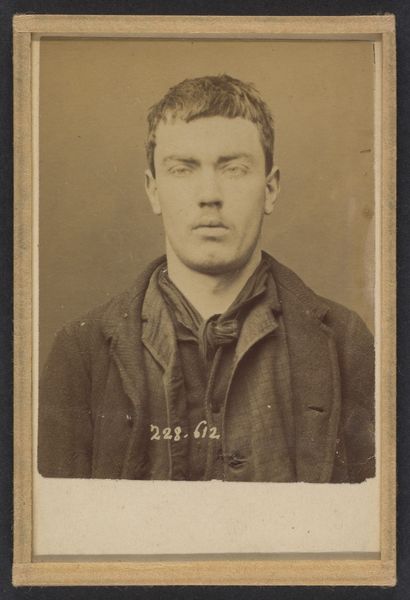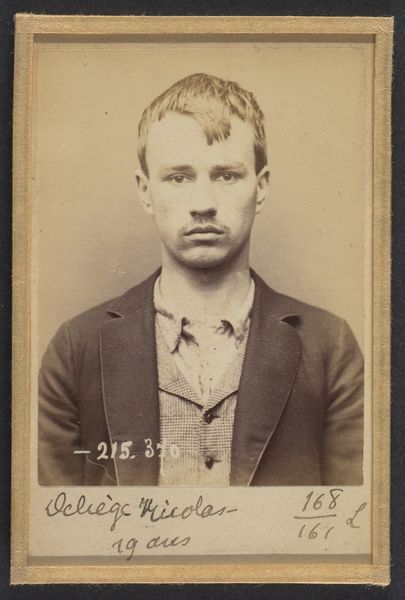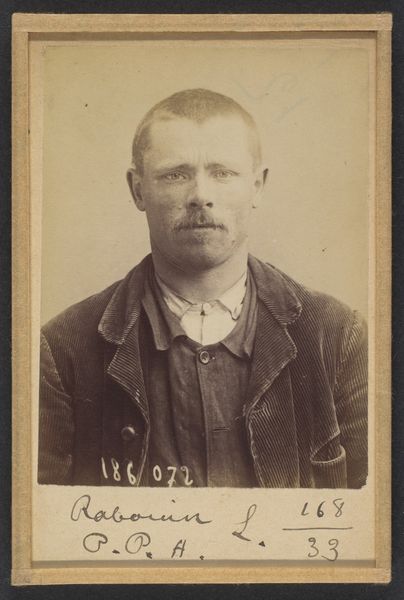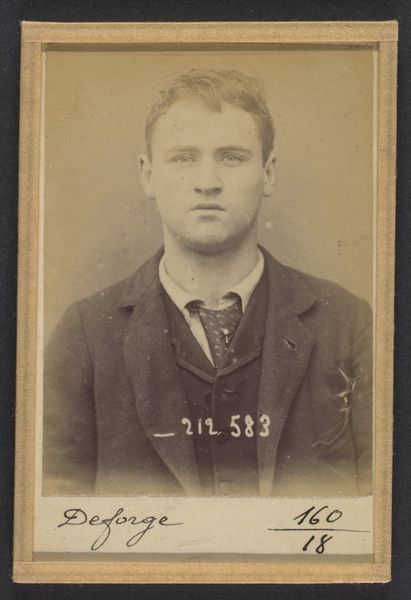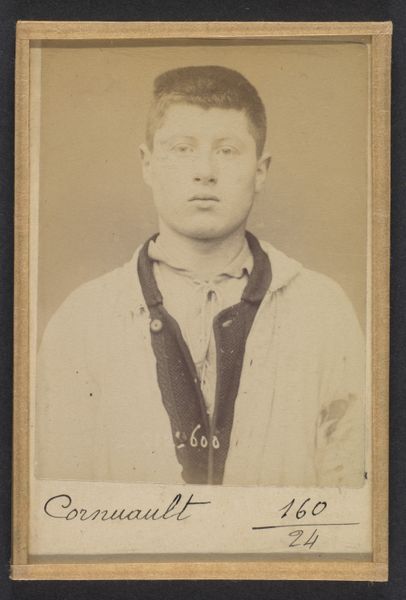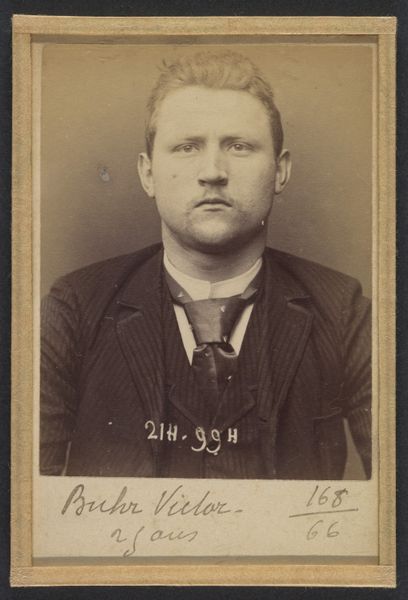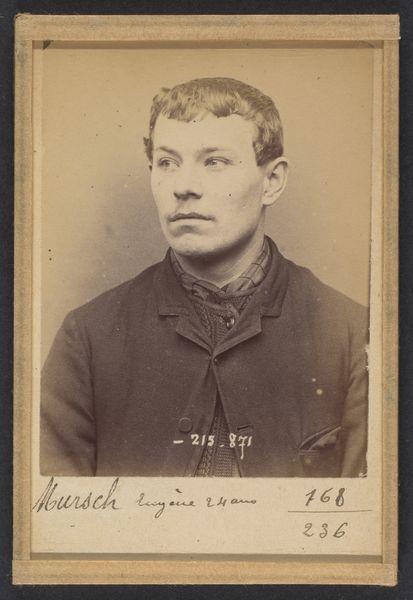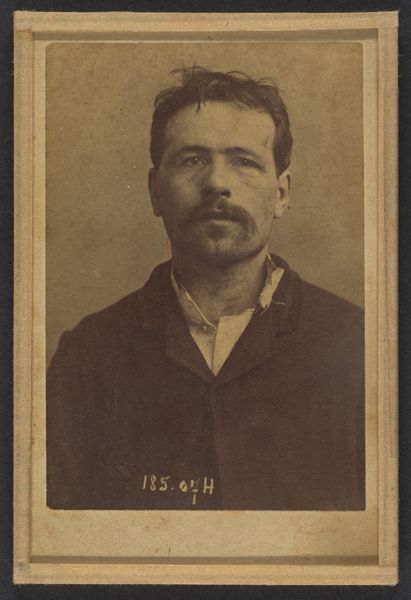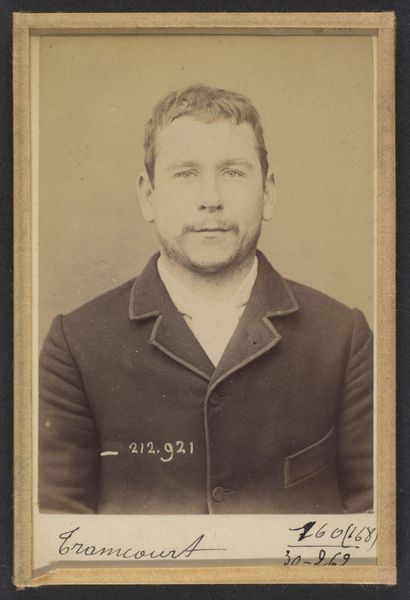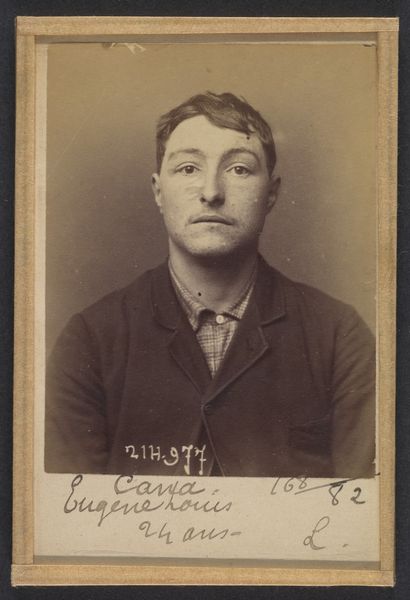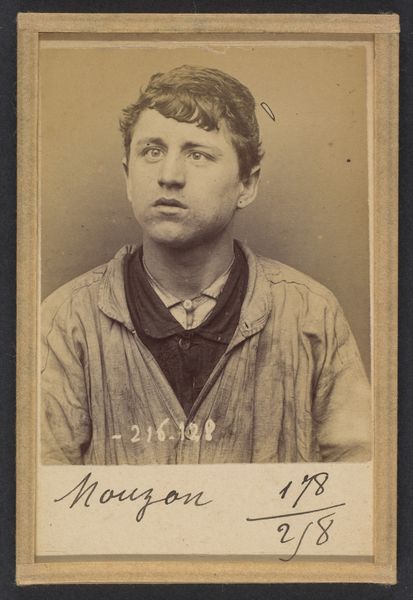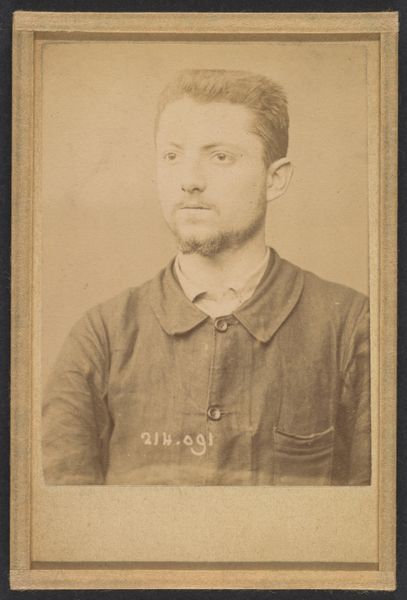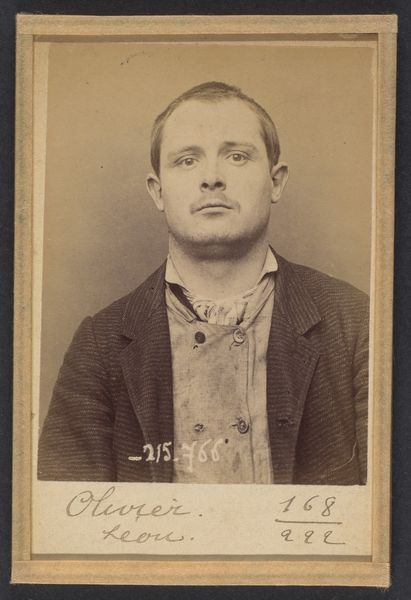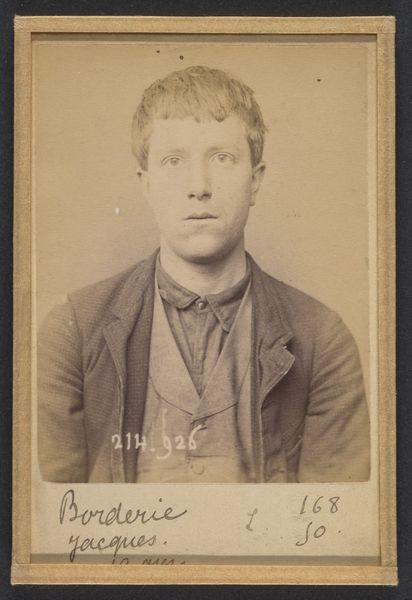
Springer. François. 21 ans, né le 17/9/72 à Duisburg (Allemagne). Menuisier. Anarchiste. 17/7/94. 1894
0:00
0:00
photography, gelatin-silver-print
#
portrait
#
photography
#
historical photography
#
gelatin-silver-print
#
19th century
#
men
#
naturalism
Dimensions: 10.5 x 7 x 0.5 cm (4 1/8 x 2 3/4 x 3/16 in.) each
Copyright: Public Domain
Curator: This photograph, titled "Springer. François. 21 ans, né le 17/9/72 à Duisburg (Allemagne). Menuisier. Anarchiste. 17/7/94.", was taken in 1894 by Alphonse Bertillon. It’s a gelatin silver print, and it now resides here at the Metropolitan Museum of Art. Editor: It’s quite haunting, really. He’s staring right through you. It has a rather heavy, weighted feeling. The kind of quiet you hear right before a storm breaks. It's amazing that such an unassuming picture can carry such weighty undertones. Curator: This photograph belongs to a series of “criminal portraits” developed by Bertillon. He pioneered anthropometry, using precise body measurements to identify repeat offenders. It was meant to be a scientific endeavor. Editor: Science and soul collide, it seems. I see an attempt at objectivity, the desire to categorize, but also an undeniable human presence. A fellow barely out of boyhood standing accused—labelled. And it just brings me to an uneasy place of thinking about systems. Curator: Precisely! It reveals how institutional forces attempt to reduce individuals to data points. Notice the stark lighting, the clinical composition. All intended to serve a system of surveillance and control. His listed occupation as a carpenter and avowed politics as an anarchist add complexity. Editor: A carpenter's hands, potentially building, shaping… and an anarchist's heart, rebelling, questioning… I feel this internal battle radiating through the picture. Do you ever think the photographer imagined him? As a full human? Or just as data? Curator: That tension, the pull between objective record and subjective interpretation, makes this image so compelling, even today. Bertillon sought a purely objective record; yet, what remains is an individual facing the judgment of the state, captured in a single, silent moment. Editor: It's like the photo is yelling. This picture asks, "What do we do with those that don't fit?". Curator: Indeed, it serves as a potent reminder of how systems of power can define and constrain individuals, and of the ethical responsibilities inherent in systems of knowledge. Editor: Yes. What a journey. Looking at it this way just adds a layer of contemplation about what images actually do. Thanks for that little dark dive.
Comments
No comments
Be the first to comment and join the conversation on the ultimate creative platform.
